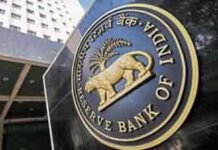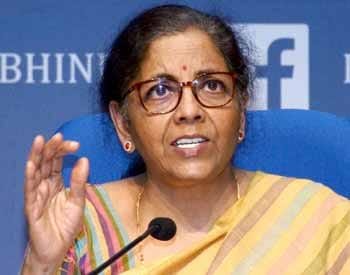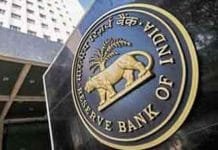The State Bank of India (SBI), the largest lender in the country, has significantly bolstered the Government of India’s treasury by delivering a substantial dividend of Rs 6,959 crore for the financial year 2023-24. This impressive contribution was handed over by SBI Chairman Dinesh Kumar Khara to Finance Minister Nirmala Sitharaman in the presence of Financial Services Secretary Vivek Joshi on Friday. This remarkable gesture by SBI underscores the robust performance and profitability of the bank over the past year.
SBI’s Robust Financial Performance
For the financial year 2023-24, SBI declared a dividend of Rs 13.70 per share, a notable increase from the Rs 11.30 per share dividend provided the previous year. This increment reflects the bank’s strong financial health and its commitment to rewarding shareholders. SBI’s consolidated net profit for the year reached a record high of Rs 67,085 crore, a significant rise from the Rs 55,648 crore recorded in the prior year. This substantial increase in net profit highlights SBI’s strategic efficiency, operational excellence, and its pivotal role in the Indian banking sector.
Dividend Handed Over to Finance Minister
On Friday, June 21, 2024, SBI Chairman Dinesh Kumar Khara formally handed over the dividend cheque of Rs 6,959.29 crore to Finance Minister Nirmala Sitharaman. The Finance Ministry later shared this significant event on their social media platforms, noting the substantial dividend received from the nation’s largest bank. This contribution plays a crucial role in the financial planning and resource allocation for the government, enabling various developmental projects and welfare schemes.
SBI’s Contribution to National Economy
The substantial dividend from SBI is a testament to the bank’s pivotal role in the national economy. As the largest commercial bank in India, SBI’s financial health and profitability directly impact the broader economic landscape. The increased dividend not only reflects the bank’s profitable operations but also provides the government with essential funds that can be used to further national development agendas.
Comparative Analysis with RBI’s Record Dividend
Earlier this year, the Reserve Bank of India (RBI) also made headlines by delivering a record dividend of Rs 2.11 lakh crore to the Government of India for the financial year 2023-24. This was a significant increase from the Rs 87,416 crore dividend provided the previous year, marking the highest dividend payout in the central bank’s history. Comparatively, while the RBI’s dividend is substantially higher, SBI’s contribution remains critical, highlighting the combined efforts of financial institutions in strengthening the government’s fiscal capacity.
Historical Context of RBI’s Dividend
In the financial year 2018-19, the RBI provided a then-record dividend of Rs 1,76,051 crore. This payout occurred just before the onset of the COVID-19 pandemic when the economy was on a relatively stable footing. The latest dividend, which more than doubles the previous year’s amount, reflects the central bank’s strategic reserves and its support for the government’s economic initiatives amidst ongoing global economic uncertainties.
SBI’s Financial Strategies and Future Outlook
SBI’s continued focus on strategic growth, cost efficiency, and digital transformation has positioned it well for sustained profitability. The bank’s efforts in expanding its digital footprint, enhancing customer service, and optimizing operational processes have been key drivers of its impressive financial performance. Looking ahead, SBI aims to continue its growth trajectory by leveraging technology, expanding its product portfolio, and maintaining a strong risk management framework.
Impact on Shareholders and Market Perception
The increased dividend payout by SBI has been positively received by shareholders and the market at large. Investors view the higher dividend as a signal of the bank’s robust financial health and its ability to generate consistent profits. This perception is crucial for maintaining investor confidence and ensuring the stability of the bank’s stock in the market.
SBI’s Role in Financial Inclusion
SBI’s contributions extend beyond financial performance to its role in promoting financial inclusion. The bank has been at the forefront of initiatives aimed at bringing banking services to the unbanked and underbanked populations in India. Through its extensive network of branches and digital banking solutions, SBI continues to play a vital role in driving financial literacy and inclusion across the country.
Collaborative Efforts with Government Initiatives
SBI’s strategic alignment with government initiatives, such as the Pradhan Mantri Jan Dhan Yojana (PMJDY) and the Micro Units Development & Refinance Agency (MUDRA) scheme, underscores its commitment to national development goals. By supporting these initiatives, SBI helps channel funds into critical areas of the economy, fostering growth and development at the grassroots level.
A Strengthened Partnership
The significant dividends from both SBI and RBI underscore a strengthened partnership between these financial giants and the Government of India. These contributions are vital for funding government initiatives, supporting economic growth, and ensuring financial stability. As SBI continues to drive profitability and operational excellence, its role in fortifying the national treasury remains indispensable. The bank’s strategic direction, coupled with its commitment to innovation and inclusion, positions it as a cornerstone of India’s financial landscape.















